


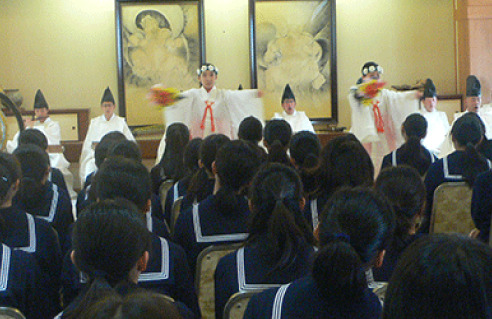
Tsurugaoka Hachimangu Shrine: Students visit this renowned shrine to attend a performance of ancient court music known as gagaku.
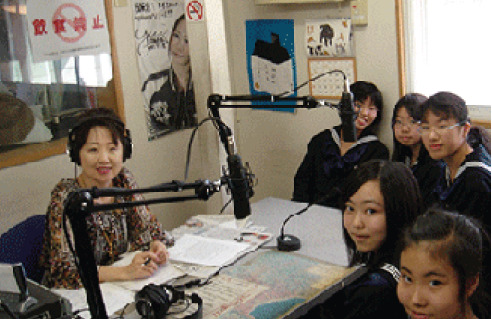
Workplace Experience: JHS Grade 1 students have the opportunity to observe people engaged in various commercial activities around the Kamakura area. For example, they visit the Kamakura City Assembly to watch local government in action. They also visit stores, small scale factories and radio stations which have been owned and managed by the same families for generations in order to get a deeper historical feel for Kamakura.
Summer Camp Activities in Amagi, Izu: JHS Grade 1 & 2 students learn about teamwork, trust-building, local literature, and nature through the 2-overnight program.
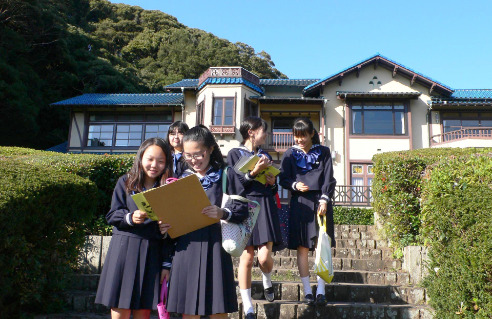
Kamakura Museum of National Treasure: Students learn about ways of appreciating Buddhist images and paintings after taking the lecture on Kamakura history and appreciation of cultural assets from the director of Kamakura Museum of National Treasure.
Kamakura Museum of Literature: Students learn about local writers and their works.
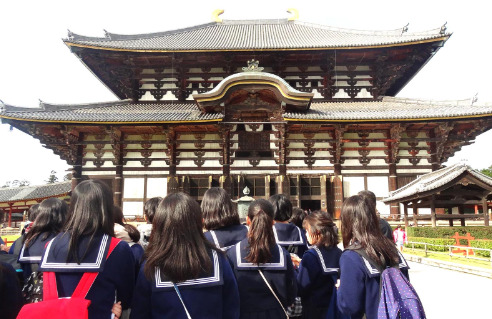
Trip to Kyoto and Nara: After studying about the history of Kamakura through the Kamakura Studies Program in JHS Grade 1 and 2, students spend a few days visiting and learning about the cities of Kyoto and Nara, cradles of Japanese culture.
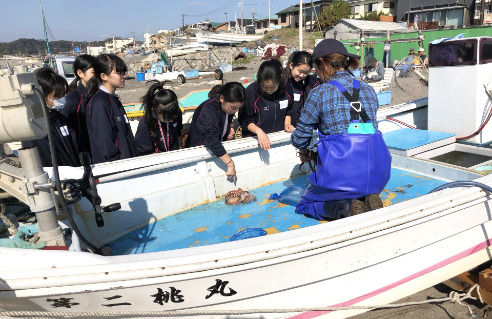
Social Welfare Activities: Students do short placements with local companies and/or NGOs over the summer holidays. This work experience enables students to gain an insight into the workings of specific careers and workplaces.

Shonan Kokusai Village International Intercultural Understanding Seminar in Hayama: In this weekend seminar, students attend courses linked to global issues; they participate in group discussions, debates and presentations to raise awareness of: north-south issues; global environmental issues; world poverty; fair trade and global food issues.
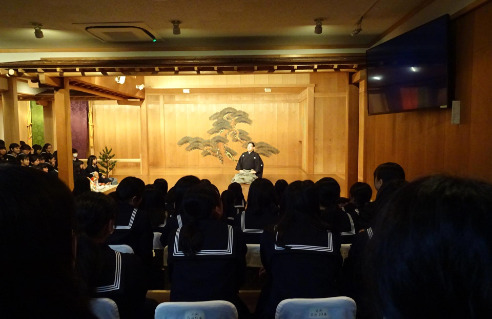
Noh performance in Kamakura, Kabuki performance at Kabuki-za in Tokyo: Students appreciate Noh and Kyogen (Noh comedies) performances at the theatre in Hase, Kamakura, and Kabuki performances at Kabuki-za in Tokyo.
Skiing trip: Students learn how to ski in Sugadaira, Nagano for three nights.
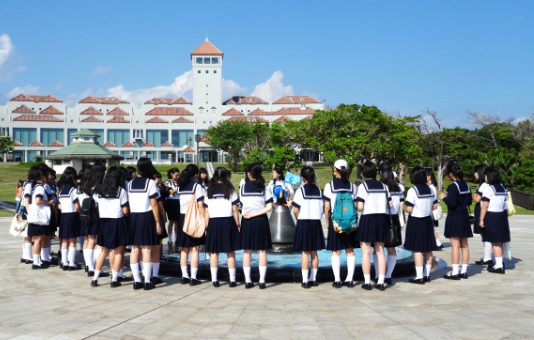
Trip to Okinawa: Students travel to the southern island of Okinawa to study its history and culture; to learn about multi-cultural societies and to observe and study local environmental problems.
These courses include the following range of culture and interclutural themes.
・World Food
・English Afternoon Tea
・Hangul 101
・Orchestra
・Haiku Poetry 101
・Archery 101
・Aquarium Experiences
・Chinese
・TOEFL
・Manners for Overseas Life
・Traditional Japanese Culture
・Kamakura Bori Wood Carving
・Japanese Painting
・Computer Technology
・Ballroom Dancing
・Hawaiian Quilting
・Sign language
・Poetry Writing
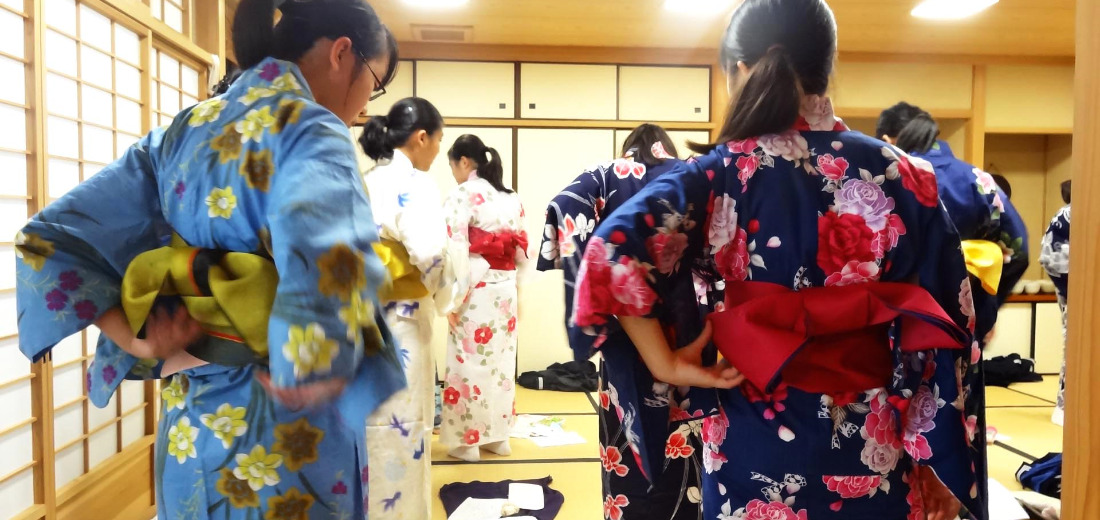
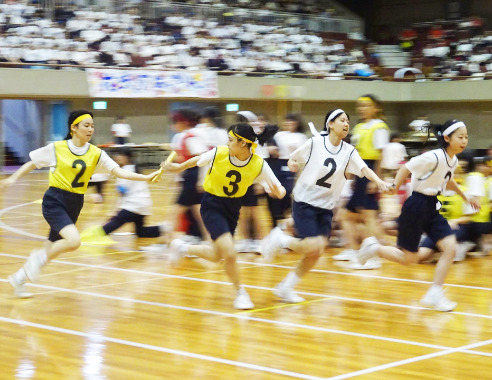
A traditional event in Japanese schools, the sports festival takes place in late May at the beginning of Semester 1. The students gather at Yokohama Cultural Gymnasium to participate in a day-long sports competition.
All grades compete in many fun and challenging events. At the end of the day, the winning grades for both the junior high school and the high school win trophies. Family members come to watch and cheer for the students.
It is a great experience for the students to work together as a team in a competitive environment.
Some popular events include relays, the tug of war and a quadrille, which is a special 4-person dance performed only by the high school seniors at what is their last sports festival before graduation.

The school culture festival, which takes place at the end of Semester 1 in late September, gives students the chance to showcase club activities, special activities, exchange programs, and various other aspects of school life, in a lively and interactive way.
It is also a great way for students to experience the challenges and rewards of event organisation.
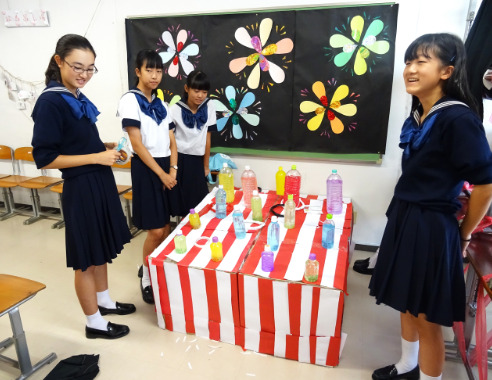
・Presentations to showcase the Canada and USA homestay programs
・Drama and dance performances
・Baton and rhythmic gymnastic displays
・Kendo displays
・Orchestra performances
・Mandolin and Guitar Club performances
・English story telling and video presentations by the English
Speaking Society
・Showings of short films by the Movie Club
・History and culture displays and costume fittings
・Science experiments and Computer Club programing
demonstrations
・Tea Ceremony events
・Exhibitions by the following clubs:
-Art
-Photography
-Manga
-Calligraphy
-Flower Arrangement
Poster displays and presentations are also made by SHS Grade 1 students who attended the very popular weekend seminar at Shonan Kokusai International Village, entitled “International Intercultural Understanding”. Students are also involved in the display and sale of products related to volunteer activities, food and drink are also available for visitors to enjoy.
This school-wide singing competition takes place in December at the Kamakura Performing Arts Center. Each homeroom chooses a song and starts practicing it months in advance. Finally at the choral concert, each homeroom performs their number on stage in front of the rest of the school with one student conducting and one student accompanying on piano. The best classes in junior high and high school receive gold, silver and bronze prizes.
While the preparation and practice for the choral concert is quite tough, it provides an opportunity for the students to build a better relationship as a class and gives them a sense of responsibility and pride.
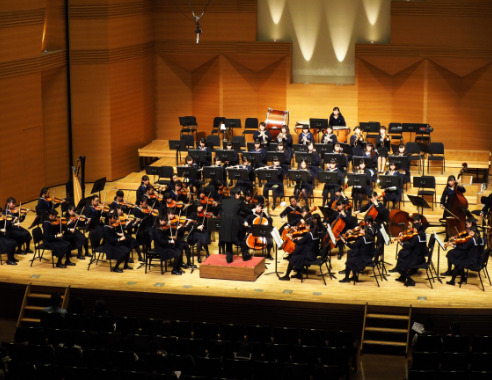
This annual orchestral concert takes place in March at the beginning of the spring holiday. The school orchestra performs several pieces at Kamakura Geijutsukan Hall in Ofuna.
It is a great way to gather the school together and celebrate the passing of another academic year and the arrival of spring.
This is a charity concert and all proceeds go towards improving education for students in Nepal.